La Carlière by Peter Copping
A new collection of homewares inspired by a 15th century French estate...
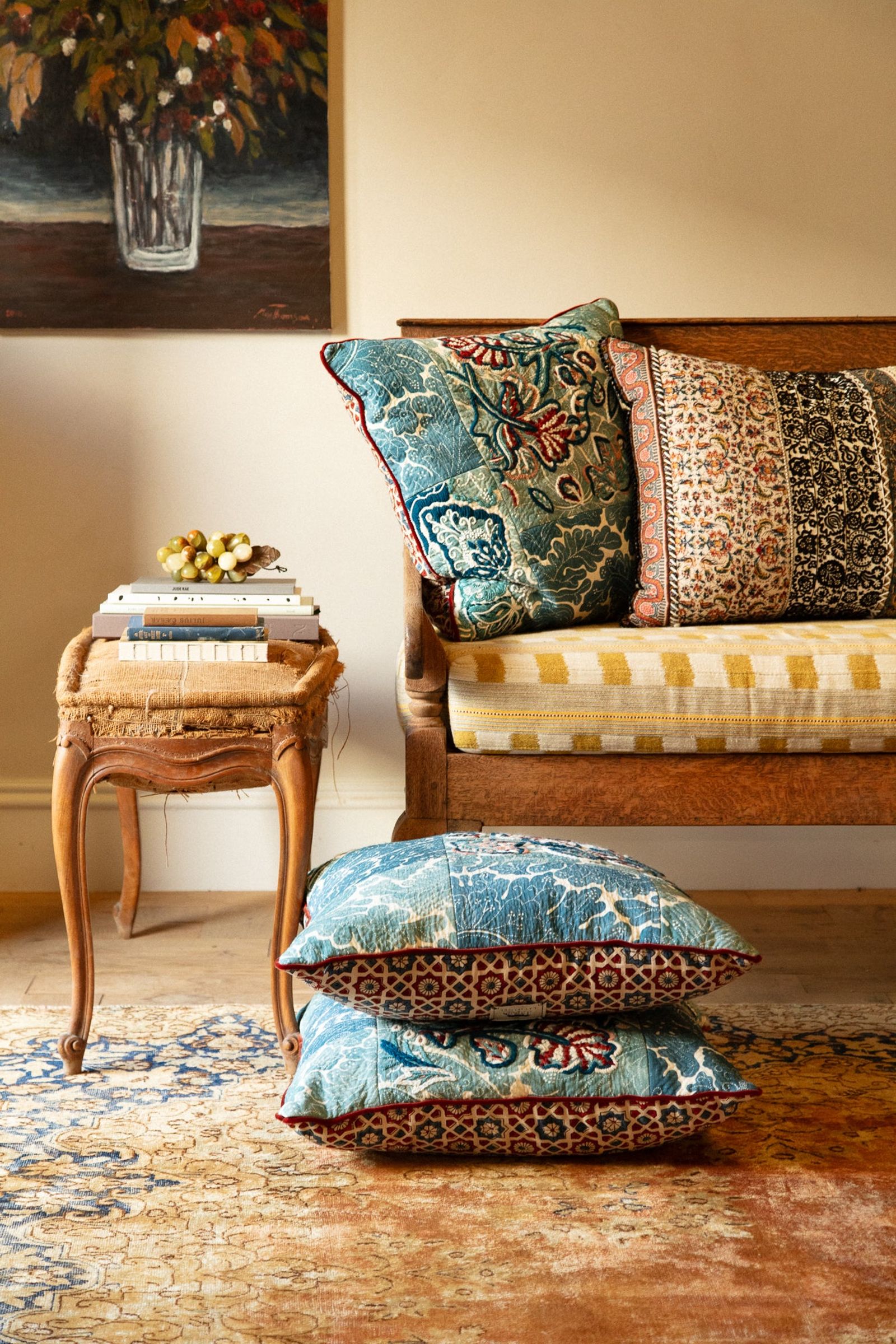
British-born Peter Copping was raised in the English countryside, just outside of Oxford where his curiosity for fashion, textiles and antiques started from a young age. Peter pursued study at Central Saint Martins and the Royal College of Art, where he then landed an internship in Paris at Christian Lacroix atelier in the early nineties, which cemented his love for Paris and the world of haute couture.
Copping remained in Paris, working for Sonia Rykiel, and then as the director of womenswear for Louis Vuitton under Marc Jacobs for over a decade, where his evident talent for fabric interplay and luxurious detailing came into fruition. Copping was tapped as creative director for Nina Ricci in 2010, where he directed the luxury ready-to-wear brand, returning to their signature codes of “Parisienne Chic'' - ultra feminine and romantic dressing with couture details...
Copping instilled the house with his design sensibility through his unabashed appreciation for fabrics and textures, trim and embellishments - articulating his savoir faire for Paris. In 2014, Copping was selected as the chosen successor for Oscar de la Renta, handpicked by de la Renta prior to his death in 2015, where Peter’s couture touch brought a sense of modernity to the brand - designing couture for everyday women...
Peter’s couture approach guided his vision throughout his fashion oeuvre of which sophistication and craftsmanship remains the perennial hallmark of his designs and forms the spirit of his ‘haute-couture' homewares lines of cushions and throws inspired by his 15th century French estate, La Carlière.
Handmade from collected fabrics and textiles from around the world, the La Carlière cushions embody stories via motifs, colour, arrangement and detailing. Exclusive to New Zealand, Tessuti is proud to host a collection of La Carlière.
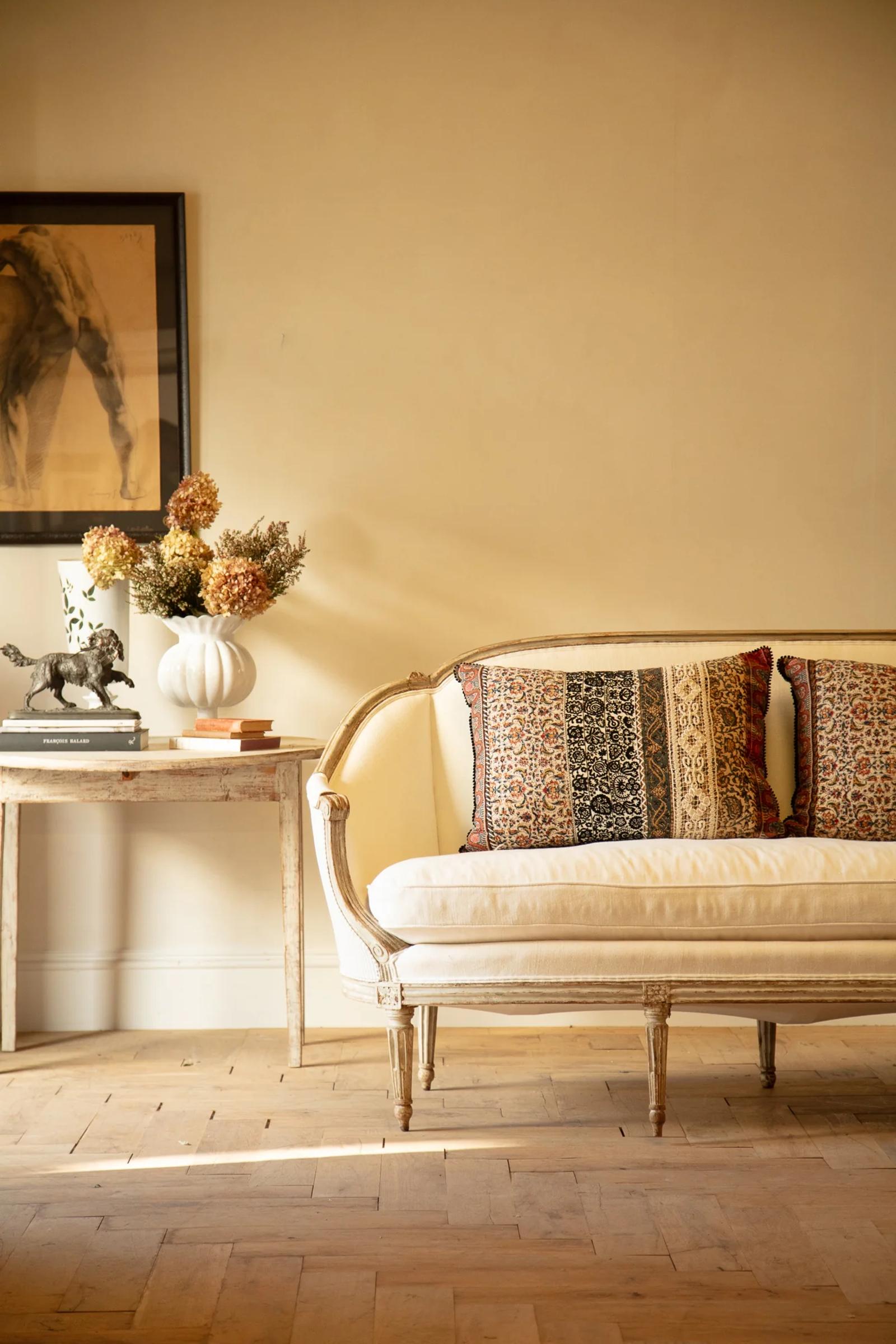
La Carlière cushions by Peter Copping
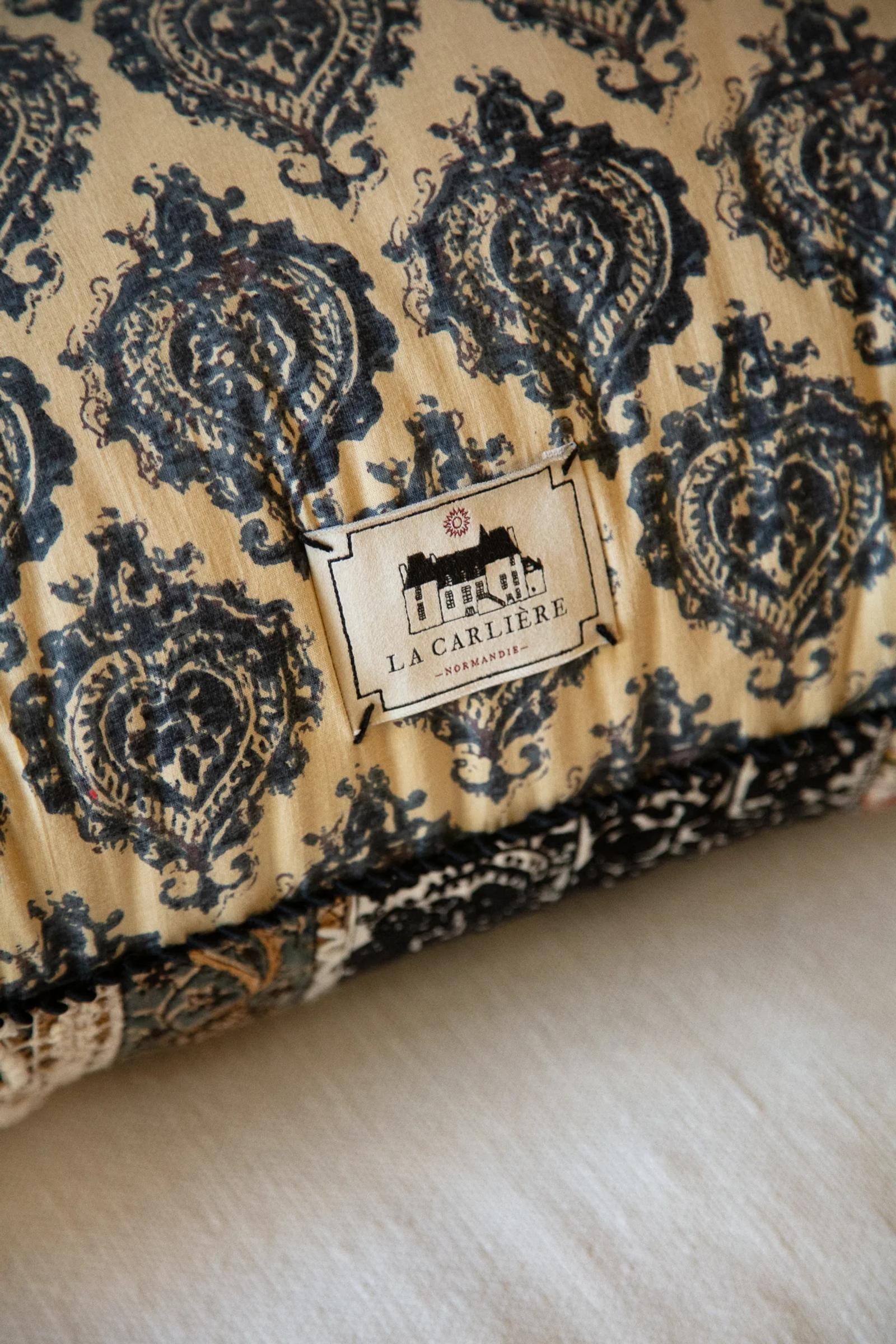
When did textiles first come into your life? Who or what exposed the world of textiles, fashion and beyond, to you?
I grew up in Oxford close to the Pitt Rivers Museum. The museum displays archaeological and ethnographic objects from all parts of the world - it actually feels like a huge cabinet of curiosities. From an early age I loved spending time there and I was always particularly drawn to the textiles.
What are your greatest memories from your time spent working at Oscar de la Renta?
During my time at Oscar de la Renta, I travelled extensively throughout the states. One of the highlights was having tea with Lynn Wyatt in her home sitting beneath the Andy Warhol portrait of her. I dressed Lynn for her 80th birthday party - a Black and White ball inspired by the famous one of Truman Capote. The next day a small group of us were taken on her private jet for lunch at her ranch in the Texan desert - it really was a weekend to remember!
Can you share with us your experience in finding La Carlière, and what this location and home has given to you in return?
When Rambert and I started our search for a second home we were not set on a particular region, only that it had to be around 2 hours from Paris. We didn't even visit too many properties before choosing La Carlière, I guess you could say it was love at first sight. It was big, but not too big and of beautiful proportions. We could see that it was somewhere that had potential and where we would be able to put our stamp. Over the years we have put a huge amount of effort into making it feel like a real home. It exudes a sense of calm and well-being and provides the perfect escape from the city. It continues to inspire us, which is why it made sense for us to name our new venture La Carlière.
Your office cupboard of textiles has us a little weak at the knees... Can you please share any stories of the people or places surrounding the antique fabrics? Where and how were they found, or sourced?
I have been buying all kinds of textiles since a long time and over the years have built up an eclectic collection. They come from all over and I am constantly on the lookout for interesting finds. The flea market in Paris remains a great source and there are now some very good dealers on Instagram - @starchandcrumpled is one of my favorites. This summer Rambert and I are travelling to India, I am extremely excited about the fabrics we will find.
In contrast to where your role eventually positioned you at previous fashion houses, La Carlière seems to offer you a greater physical connection to the object, and the ability to work with your hands again. Can you tell us about your learnings with all of the different slow arts needle work and handiwork prevalent in your homeware offerings?
I completely agree. I found the more I progressed with my career the more removed I became from the product - the focus was on management of the team and being the face of the brand. La Carlière, for the moment, is very hands on, and quite often I will spend a Sunday afternoon embroidering and putting the finishing touches to the cushions myself. This was also a reason that we wanted to go to India this summer. We will be meeting with many craftspeople and have signed up for a Block printing workshop where we will learn and experience the craft firsthand - be prepared for new products in the future!

La Carlière Blue Cushions by Peter Copping
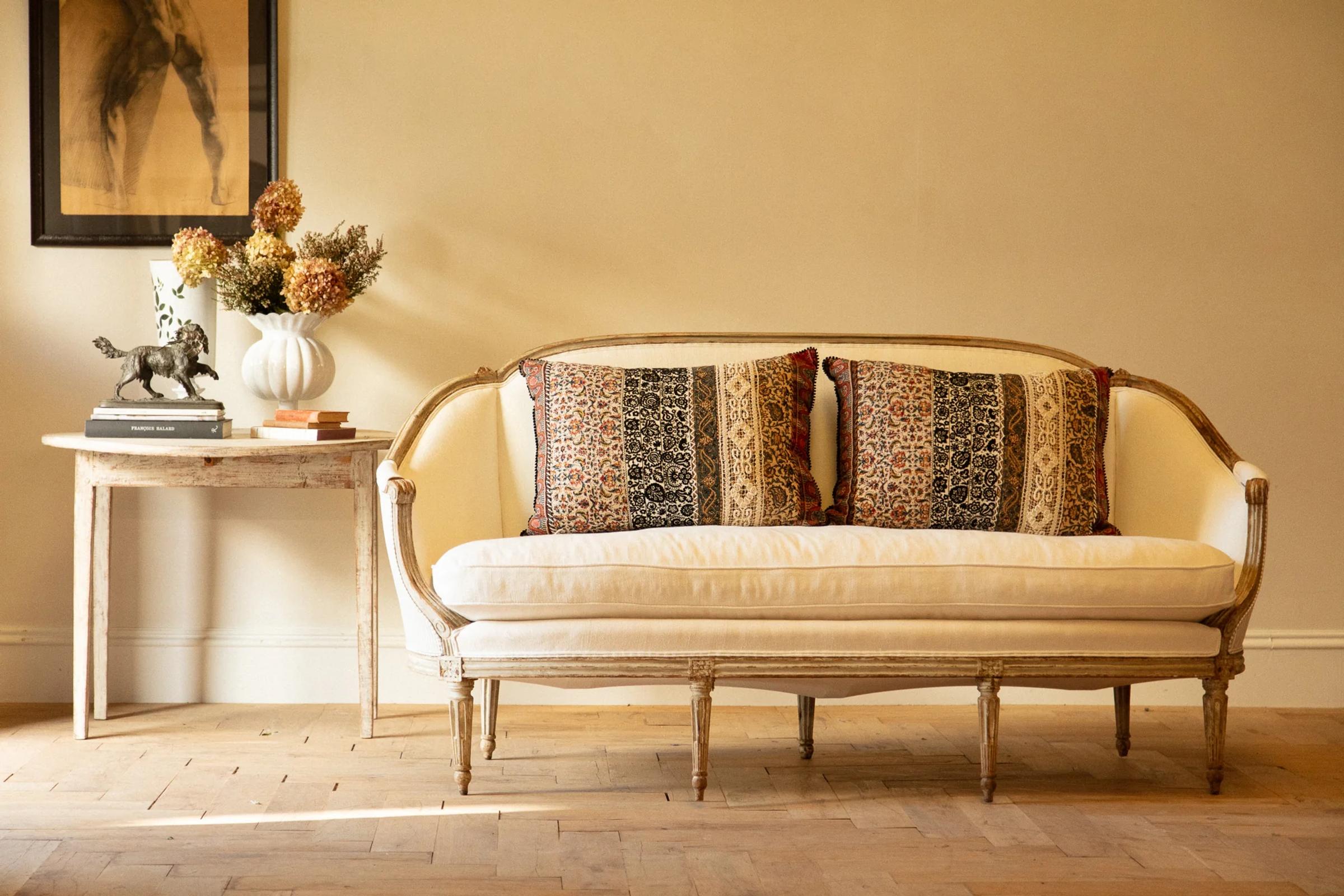
La Carlière Cushions by Peter Copping
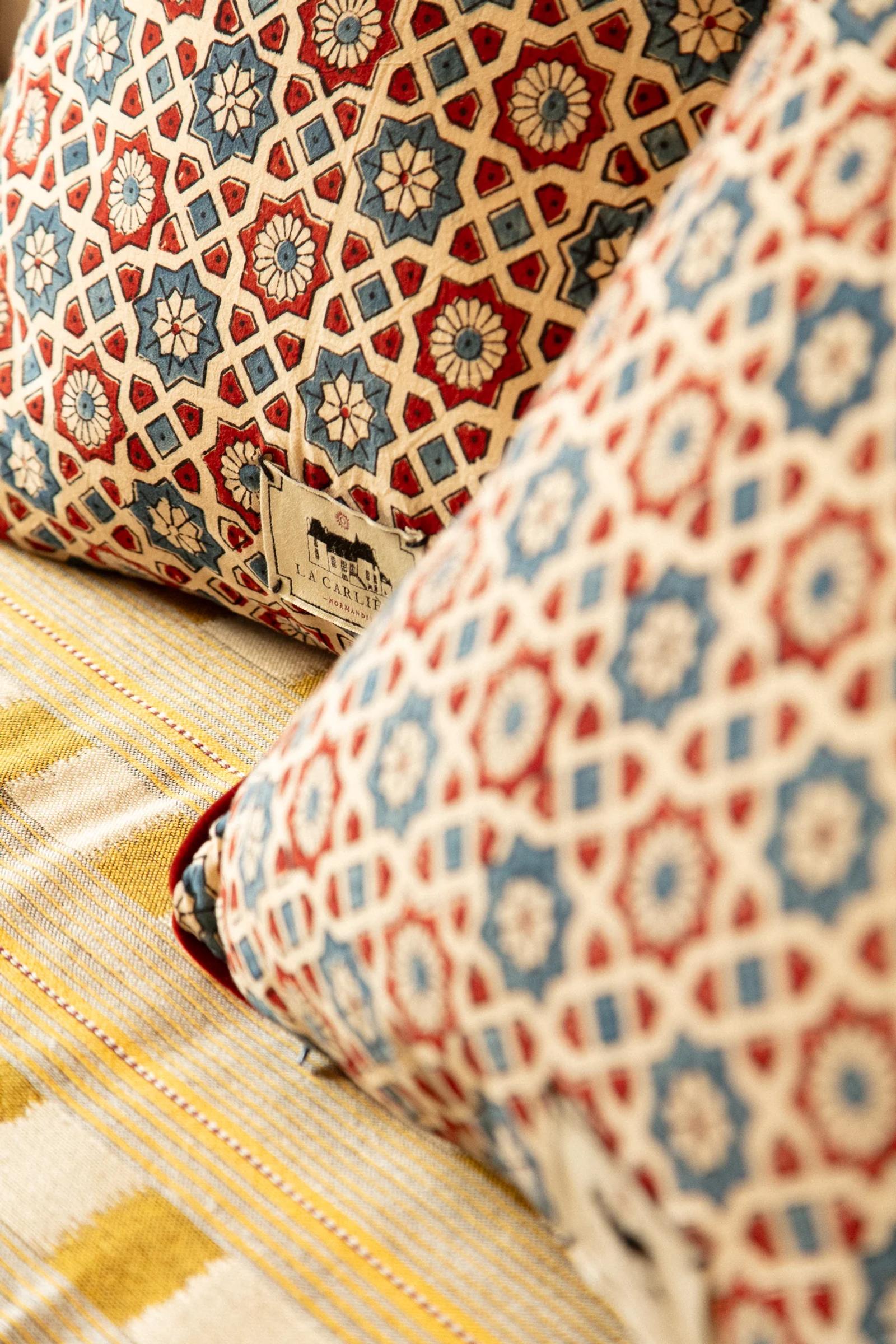
In your opinion, what are some important attributes for a home to embody? Where or how do you find these in your own space?
For me a home has to be comfortable, and we like to create different ambiences throughout the house. Some rooms are light and airy while others lend themselves to cocooning in the winter months. You will see from images of our interiors that we are not minimalists. We love to surround ourselves with objects bought on our travels - each one with a special memory. Books are another important factor for a home and for me to finish a room.
When you leave Normandy, what is the thing you most look forward to experiencing in Paris?
Our cats always stay in Paris for the weekend, so I am always happy to see them on a Sunday night. The other thing I would say is that although it is slowly improving there is a lack of good restaurants in our region. Saying that, we are completely spoiled by the produce from our local market, so it makes home cooking a real pleasure.
Fabric notes on Ceneri...
We used an eclectic mix of fabrics for these two cushions. Late 19th century Persian block print is mixed with a vintage Eastern European black and white embroidered panel. A frieze from an antique paisley shawl runs along one edge, a French hand crocheted band completes the mix. In some places the panels are linked with hand whip stitching in a wool thread. For the reverse side an Indian block print has been used. A mini Pom Pom braid outlines the cushions.
These are the only two cushions that exist like this - they cannot be repeated. These cushions are named after Saint Ceneri. A small village 5km from La Carliere. Listed as one of the most beautiful villages in France, Rambert and I enjoy taking a walk along the twisting river bank to the minuscule chapel- immortalised by many artists including Bernard Buffet. The interior filler for these two cushions is made from recycled plastic bottles- the cushions are almost 100% sustainable.
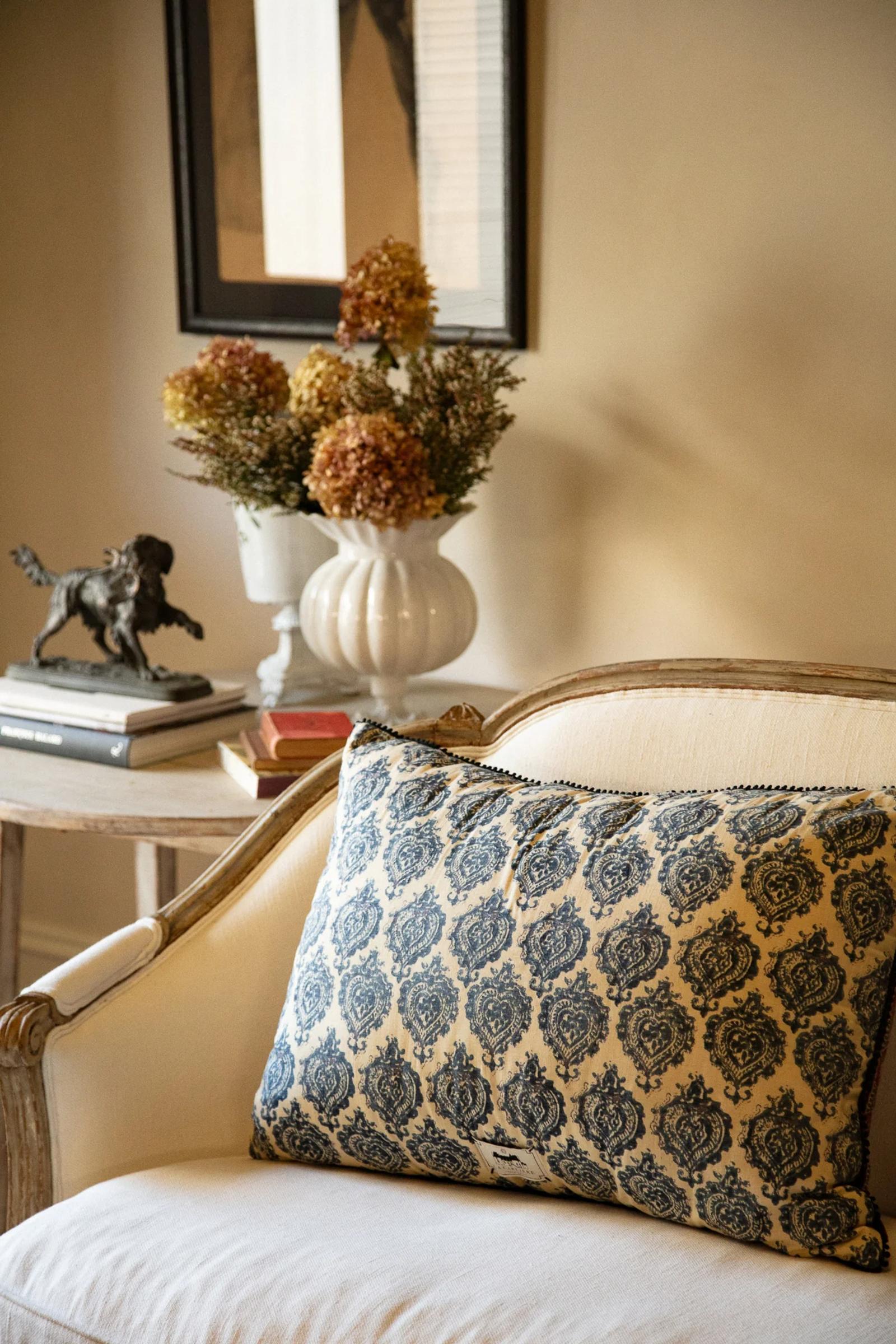
La Carlière Cushions by Peter Copping

Close up detailing of the Ceneri Cushion
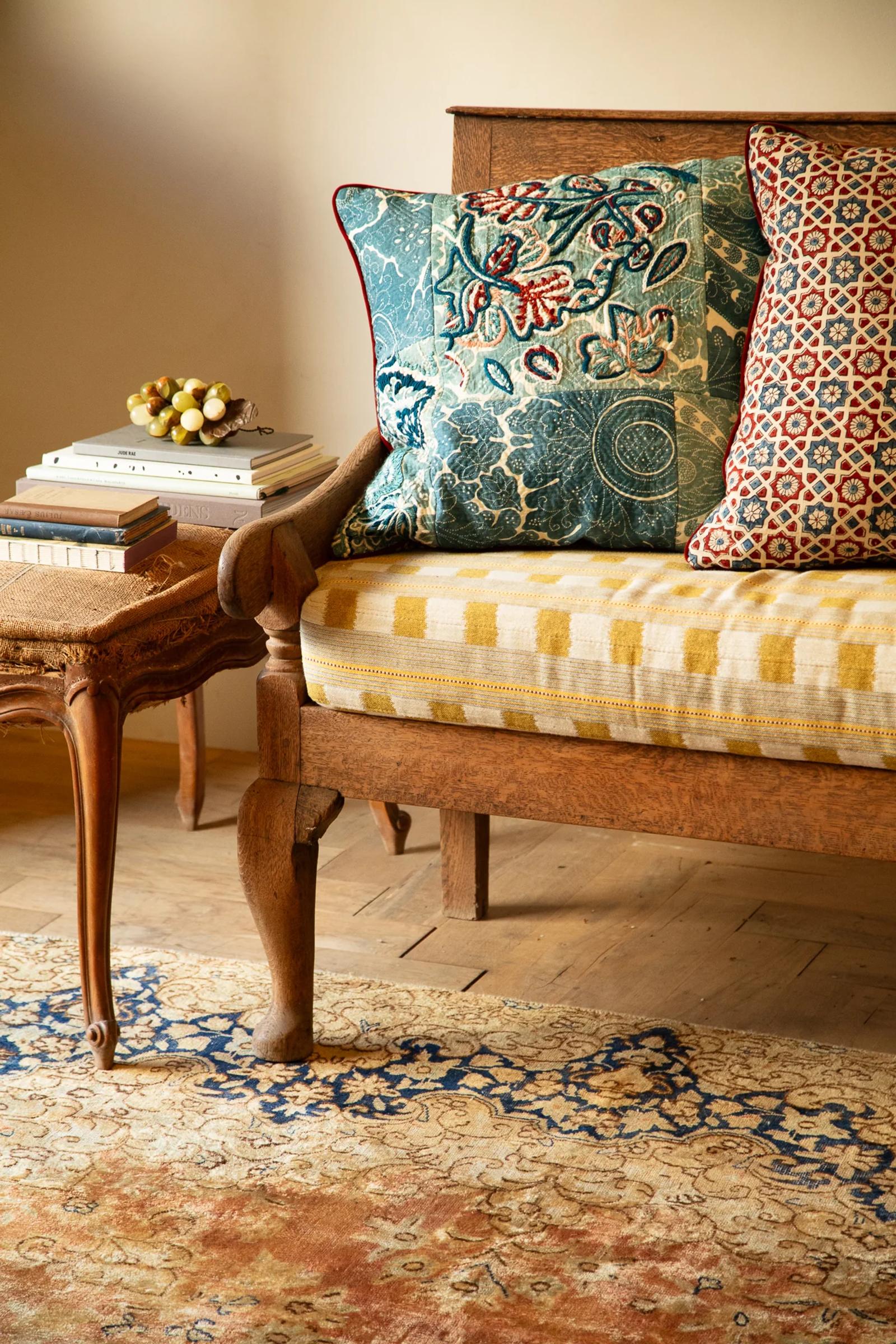
Fabric notes for Belleme IV...
The base fabric is contemporary, but made to look like an 18th century indigo printed quilt. It has been woven to appear quilted and faded with time. Two different colour ways have been patchworked together. Some squares have been embroidered with wool crewel work in contrasting colours - the design inspired by Elizabethan embroidery (the same period of when La Carlière was built).
The embroidery is made in India with a supplier fully committed to the Lotus agreement- guaranteeing excellent working conditions and a fair living wage for their workers. Only 4 embroidery houses in India have signed this agreement. For the reverse side a graphic block print has been used in coordinating colours. We had limited stock of this fabric- therefore the cushions cannot be repeated exactly as is, making them unique. The cushions are named after Belleme, a small town close to La Carlière - the town centre full of individual antique decorating stores and cafes.
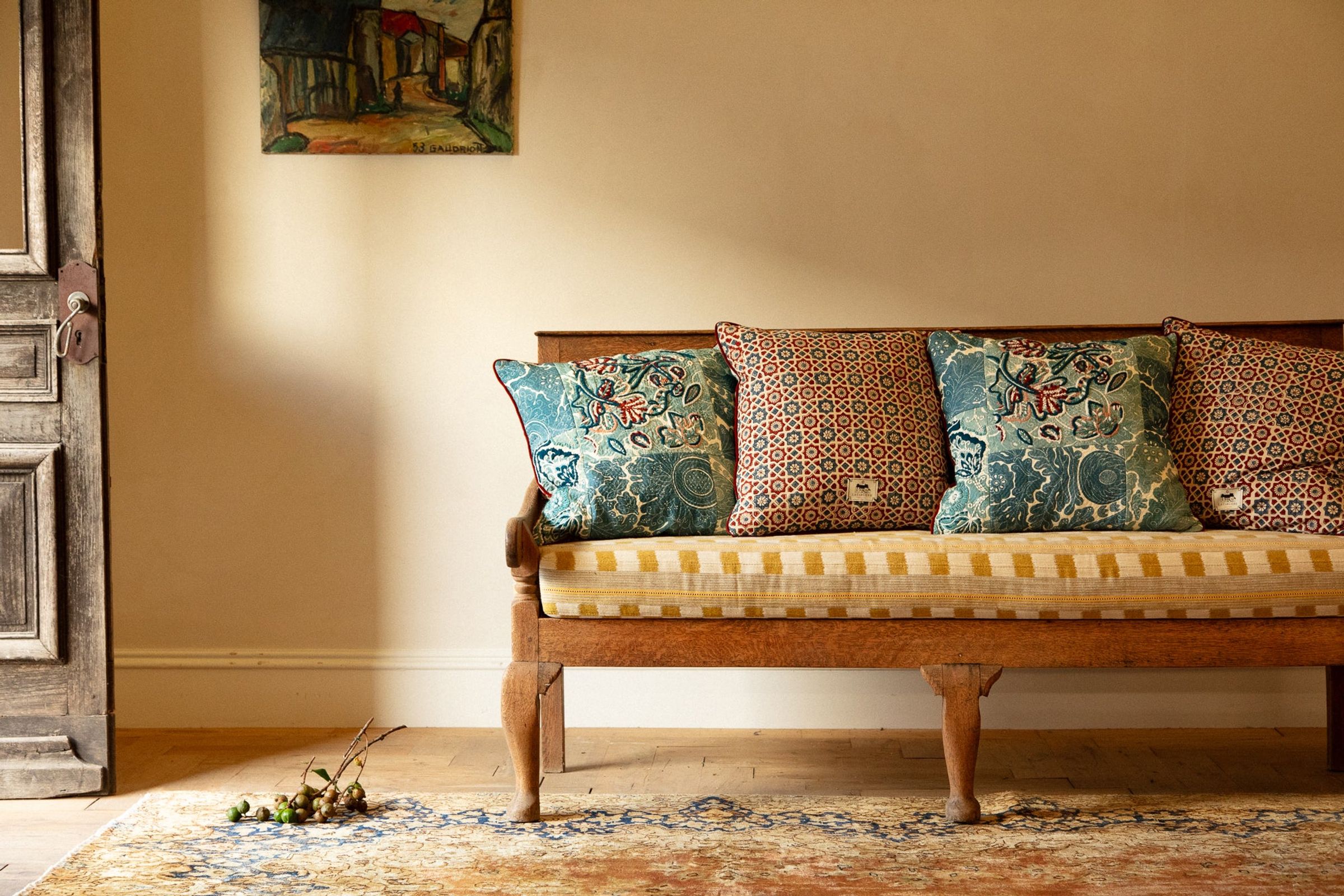
La Carlière Cushions by Peter Copping
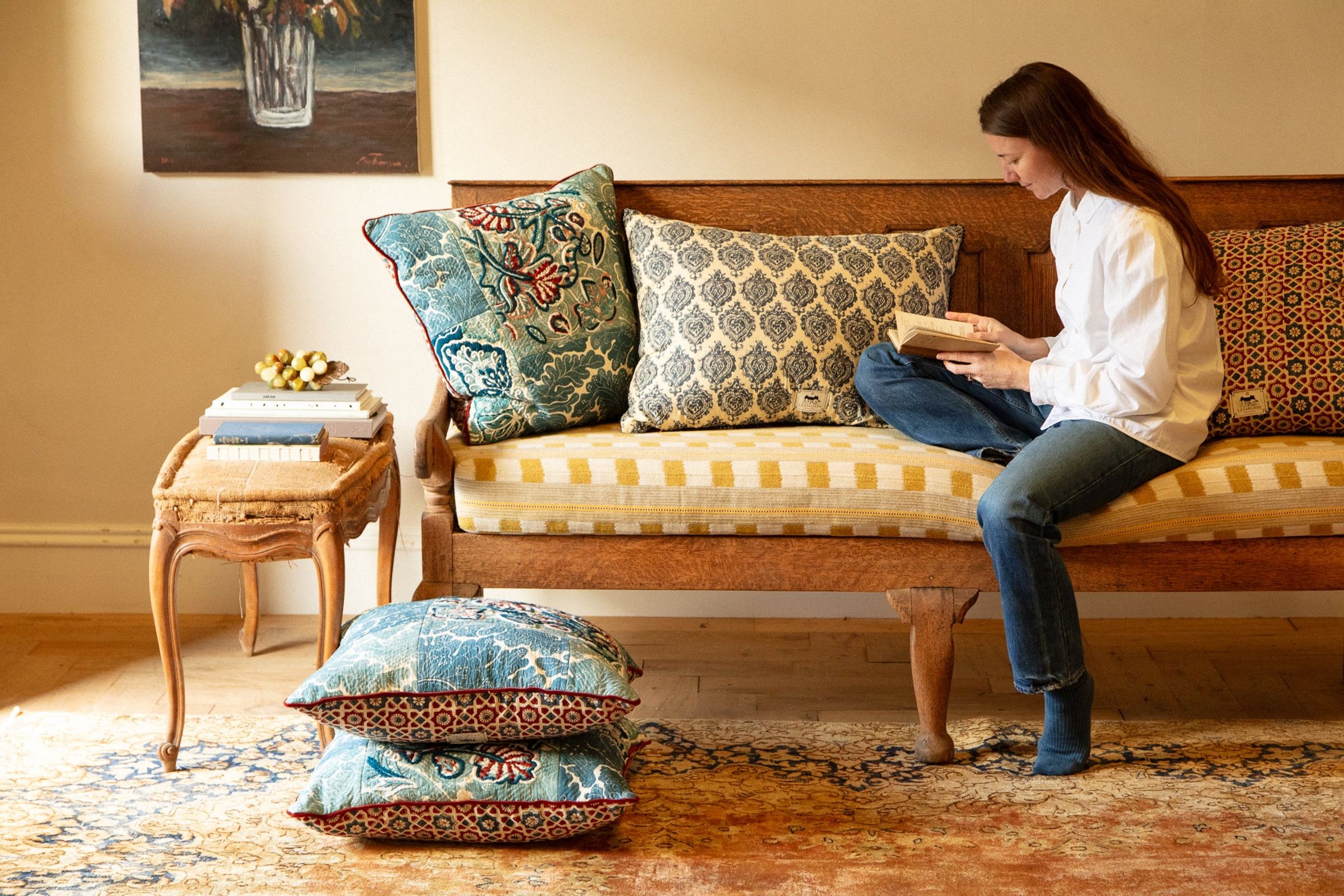
La Carlière Cushions by Peter Copping
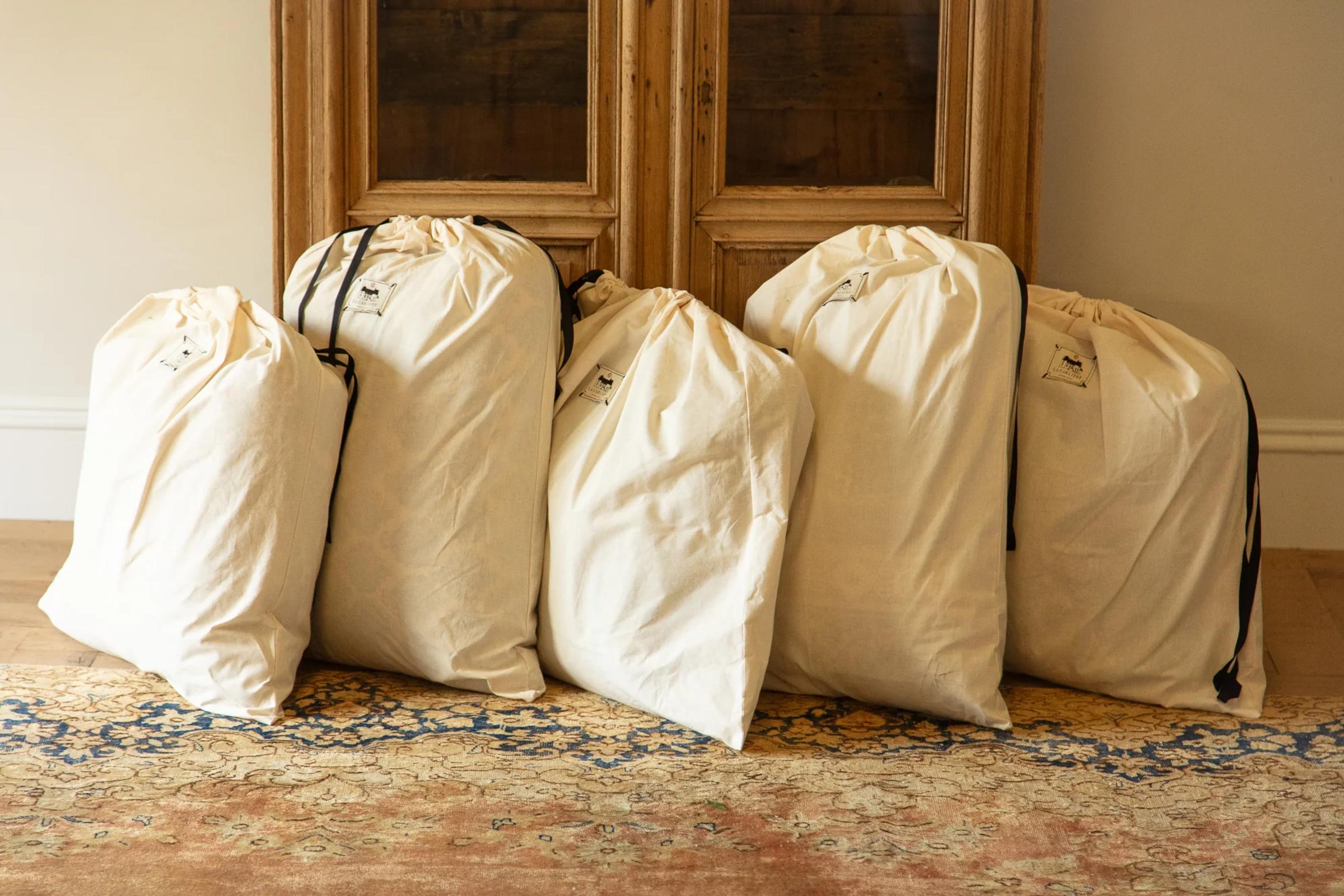
All cushions are made in Normandy and delivered in their own calico drawstring bag. Perfect to re-use afterwards. See our collection of La Carlière in store, and online here.